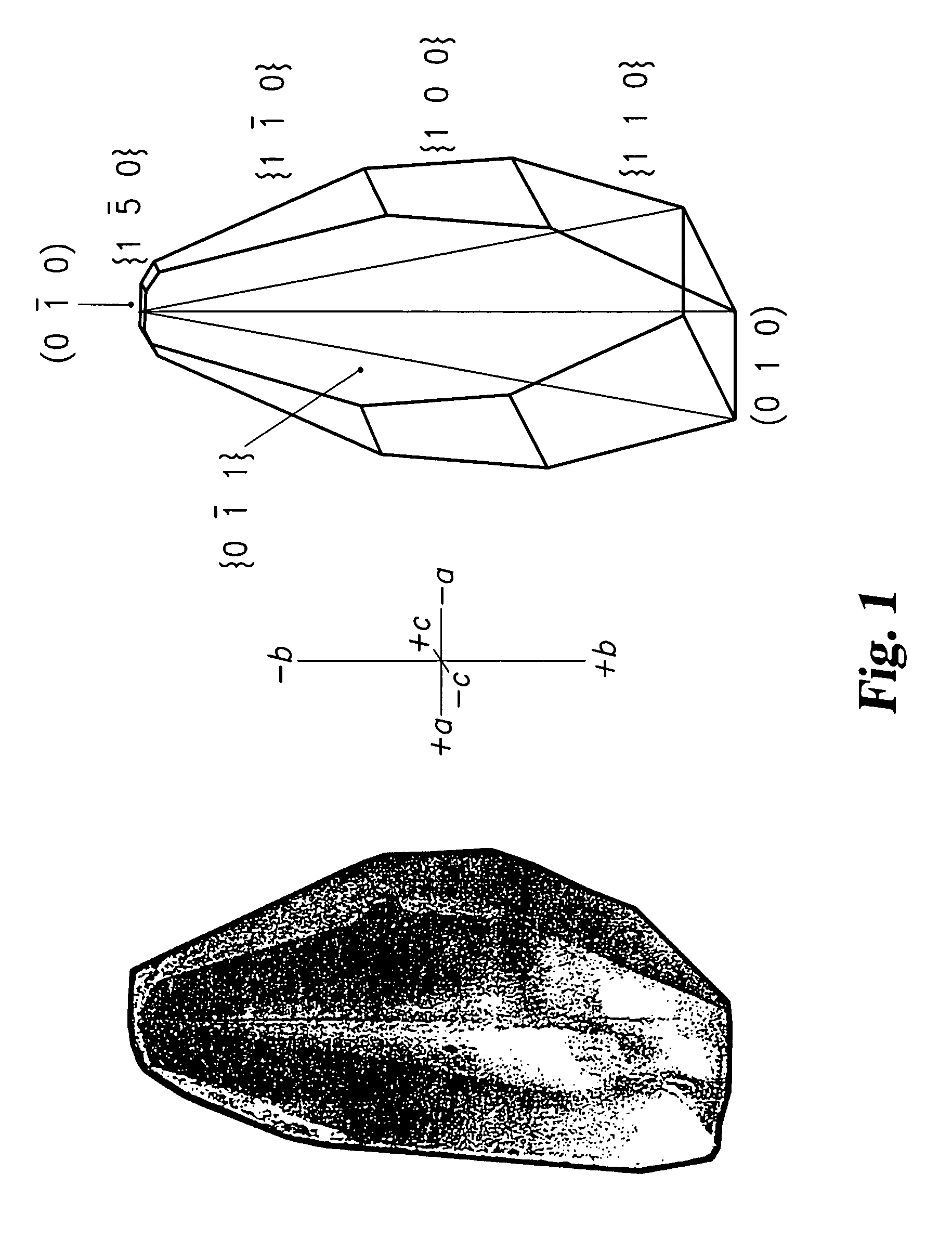Pharmaceutical materials and methods for their preparation and use
a technology of pharmaceutical materials and methods, applied in the field of pharmaceutical formulations, can solve the problems of threatening the emergence of api's into the marketplace, high sensitivity to both physical and chemical instabilities, and difficult to achieve certain api's, so as to improve stability and shelf life.
- Summary
- Abstract
- Description
- Claims
- Application Information
AI Technical Summary
Benefits of technology
Problems solved by technology
Method used
Image
Examples
example 1
[0080]To demonstrate the potential kinetic stabilization of proteins, green fluorescent protein (GFP) was incorporated into deionized α-lactose monohydrate. GFP was selected because it is known to fluoresce only in its native conformation. Upon denaturation, the interior of the β-barrel of the molecule is exposed and the fluorescence of the p-hydroxybenzylideneimidazolinone chromophore is rapidly quenched. Typical crystal growth conditions involved the addition of 8 volumes of an approximately 1 mg / mL (approximately 37 μmole) solution of GFP in 10 mM tris-HCl, pH8 and 10 mM EDTA to 100 volumes of a supersaturated aqueous solution (approximately 1.15 M) of deionized α-lactose monohydrate. The mixed solution was allowed to stand for 3–4 days at room temperature in a 24-well plate. Crystals were harvested between 1–3 days and displayed a hatchet morphology as shown in FIG. 1 with a broad base (010) further bounded by {100}, {110}, {1–10}, and {0–11}. Small (0–10) and {1–50} faces are a...
example 2
[0082]To investigate the potential for incorporation of a biopharmaceutical into crystals of biocompatible excipients, studies were conducted using rhodamine-labeled glandular glucagon and lactose. As in the previous studies, the rhodamine label was used to facilitate the visualization of glucagon in the host crystals. Typical crystal growth conditions involved the addition of 5 volumes of a supersaturated solution of deionized α-lactose monohydrate to 1 volume of an approximately 1.5 mg / mL (approximately 300 to 400 μmole) of rhodamine-labeled glucagon in purified water. The mixed solution was allowed to stand at room temperature in a 24-well plate. Crystals were harvested between 1–3 days and displayed a hatchet morphology with a broad base. With the rhodamine label, glucagon inclusion was visible in the crystals as a well-defined pyramid corresponding to the (010) growth sector. The level of inclusion was determined to be approximately 0.1% (w / w).
[0083]In-vitro dissolution experim...
example 3
[0084]To demonstrate the universality of this technology for incorporation of a diversity of biopharmaceuticals into crystals of biocompatible excipients, studies were conducted using biosynthetic human insulin and insulin analogs, V8-GLP-1(7–37)OH, a glucagon-like insulinotropic peptide-1 analog, exendin, and human growth hormone in deionized α-lactose monohydrate or phthalic acid. Information regarding V8-GLP is available in U.S. Pat. No. 5,705,483, issued to Galloway and Hoffman on Jan. 6, 1998, which patent is hereby incorporated herein in its entirety. For information regarding exendin, see, e.g., R. Goke, H. C. Fehmann, T. Linn, H. Schmidt, M. Krause, J. Eng, B. Goke, “Exendin-4 is a High Potency Agonist and Truncated Exendin-(9-39)-amide an Antagonist at the Glucagon-like Peptide 1-(7-36)-amide Receptor of Insulin-secreting Beta-cells,” J. Biol. Chem. 1993, Sep 15, 268(26), pp. 19650-5, which reference is hereby incorporated herein in its entirety.
[0085]Typical crystal growth...
PUM
| Property | Measurement | Unit |
|---|---|---|
| Percent by mass | aaaaa | aaaaa |
| Volume | aaaaa | aaaaa |
| Acidity | aaaaa | aaaaa |
Abstract
Description
Claims
Application Information
 Login to View More
Login to View More - R&D
- Intellectual Property
- Life Sciences
- Materials
- Tech Scout
- Unparalleled Data Quality
- Higher Quality Content
- 60% Fewer Hallucinations
Browse by: Latest US Patents, China's latest patents, Technical Efficacy Thesaurus, Application Domain, Technology Topic, Popular Technical Reports.
© 2025 PatSnap. All rights reserved.Legal|Privacy policy|Modern Slavery Act Transparency Statement|Sitemap|About US| Contact US: help@patsnap.com



